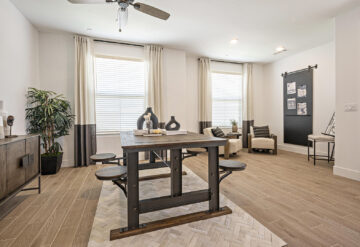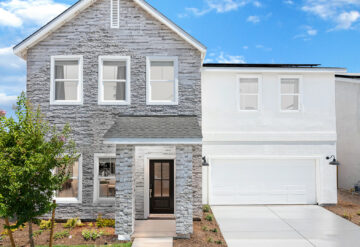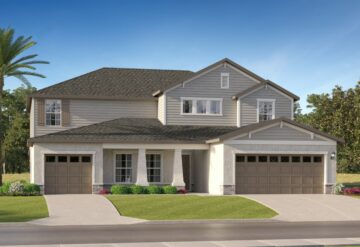Homes are changing and so is senior living. Lennar’s Everything’s Included® program features the innovative Wi-Fi CERTIFIED™ Home Design, providing homebuyers with a home ready for the future of technology. In this recent Senior Housing News article, Jack Silverstein explains why senior living providers are looking to Lennar when it comes to smart homes.
Outcomes and data are still trickling out, however. In the meantime, senior living operators who want to learn more about smart homes should look to Lennar Corporation. The Miami-based company does not build senior housing and is exclusively an all-ages, market-rate builder. But it is relevant to senior living because it is the largest homebuilder in the United States, and in 2017 it made history with the first full home environment to receive Wi-Fi certification from the Wi-Fi Alliance, a nonprofit that serves as the stamp of approval of smart devices in the U.S.
Working with Amazon, Lennar now plans to go fully Wi-Fi Certified with its entire portfolio, approximately 250,000 home sites and 1,300 residential communities in 49 markets across 21 states.
Senior living operators can learn these three lessons from Lennar, which they can apply to their own pursuit of smart homes.
Lesson 1: Smart homes in senior living benefit today’s resident, but they are for tomorrow’s
The notion that today’s seniors are uninterested in smart technology is as antiquated as rotary phones.
Despite a lag behind younger generations, today’s senior is growing increasingly comfortable with this technology. Pew Research Center shows that the percentage of people 65 and up who own smartphones quadrupled from 2011 to 2016, while the percentage of 65+ adults using the internet grew five times from 2000 to 2016.
The senior living Alexa pilot programs and other use cases popping up nationwide are proving successful. In November of 2017, for instance, Kisco announced that 79% of residents at The Cardinal were engaging with the K4Connect dashboard.
But the key reason that senior living operators are pivoting to smart homes today is for the competitive advantage it gives them with tomorrow’s resident. These future seniors will be accustomed to smart homes by the time they reach senior living. The 2018 Global Smart Home Forecast from Strategy Analytics lists the entire smart home market at $93 billion in 2018, with potential growth to $143 billion in 2023.
By that time, 14% of houses worldwide are expected to have at least one type of smart system. The cycle will continue: the more prevalent the tech, the more demand from those who don’t yet have it. Already today, nearly 80% of home buyers express an interest in smart technology.
“Ostensibly, what we are doing is future-proofing the home — that is what’s important,” says Danielle Tocco, vice president of communications for Lennar Corporation.
Lesson 2: Ensure total Wi-Fi connectivity with no dead spots
Lennar achieved Wi-Fi certification with two simple steps, either or both of which senior living operators can accomplish. First, they partnered with Ruckus Networks, (now part of Arris Group of Sunnyvale, California) to set Wi-Fi access points with no dead spots. They confirmed the absence of dead spots by creating a heat map of the house to test connectivity at every point.
This total connectivity gives Lennar’s homes the technological infrastructure that both enables all of today’s smart technology, and facilitates tomorrow’s home smart tech devices, even ones not yet known.



